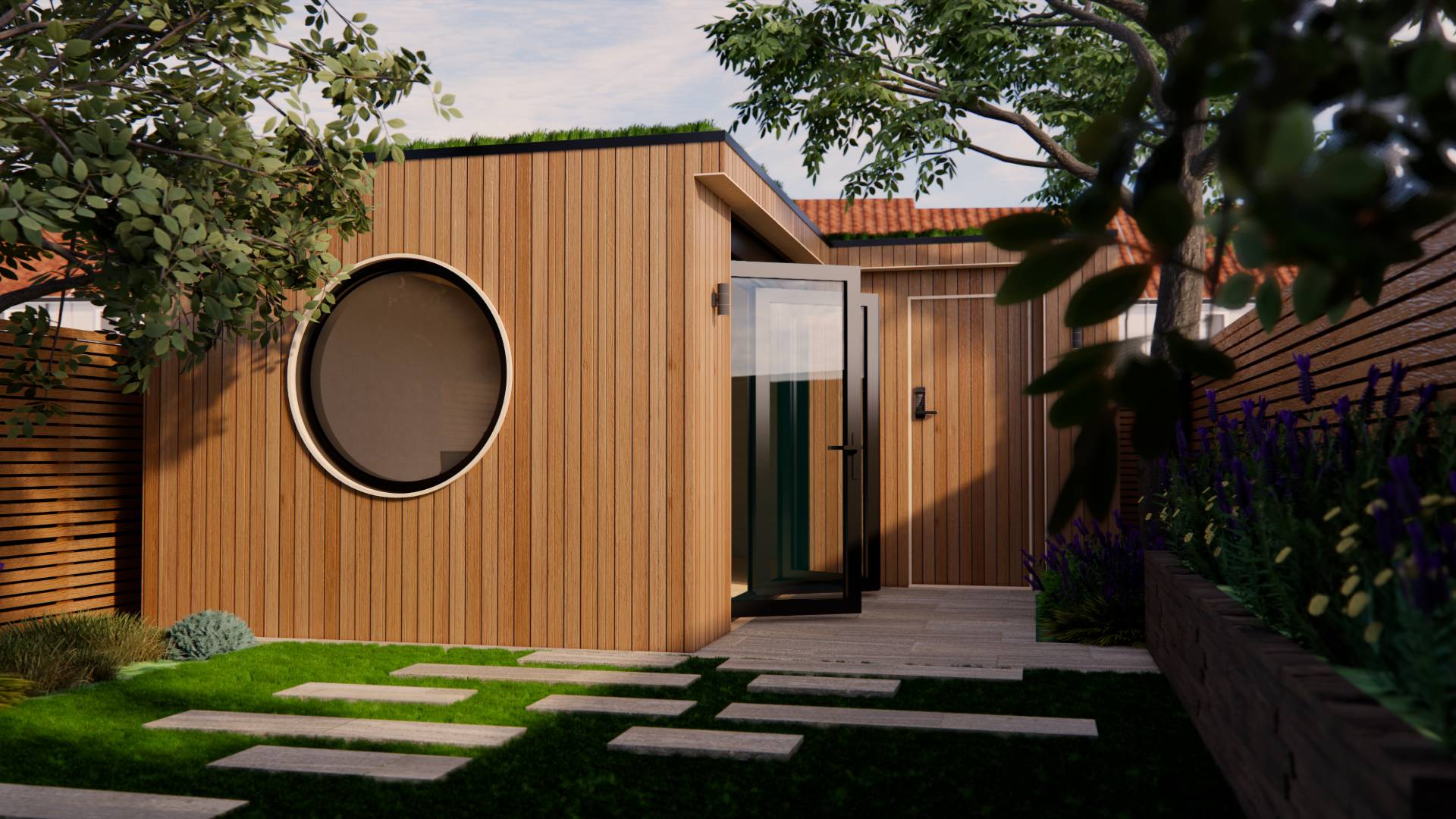
10 Jul Understanding Cladding Types: Five Types to Consider for Your Project
Choosing the Best Cladding Type
Cladding is an essential component in building construction, offering both aesthetic appeal and functional benefits. The choice of cladding material can significantly influence a building’s durability, energy efficiency, and environmental footprint. In this blog post, we’ll explore five popular cladding types: brick, timber, metal, composite, and render. We’ll discuss their advantages and disadvantages, common uses and styles, environmental impact, and costs to help you make an informed decision for your next project.
Brick Cladding Types
Advantages of Brick Cladding:
-
- Durability: Brick cladding is highly durable, resistant to weather and fire, and can last for decades with minimal maintenance.
-
- Insulation: It provides excellent thermal mass, helping to regulate indoor temperatures and improve energy efficiency.
-
- Aesthetics: Offers a timeless, classic look that can enhance the curb appeal of any building.
Disadvantages of Brick Cladding:
-
- Weight: Brick is heavy, which can increase structural load and require a more robust foundation.
-
- Cost: Higher initial costs compared to some other cladding materials.
-
- Installation: Time-consuming and labor-intensive to install.
Common Uses and Styles for Brick Cladding:
-
- Commonly used in residential homes, commercial buildings, and schools.
-
- Styles range from traditional red brick to modern, sleek bricks in various colors and textures.
Environmental Impact:
-
- Production: Brick production is energy-intensive and can contribute to carbon emissions.
-
- Lifecycle: Long-lasting and often recyclable, which mitigates some environmental concerns.
Costs:
-
- Material Cost: Moderate to high.
-
- Installation Cost: High due to labor intensity.
Timber Cladding Types
Advantages of Timber Cladding:
-
- Aesthetic Appeal: Offers a natural, warm look that blends well with various architectural styles.
-
- Sustainability: Can be sourced from renewable resources and is biodegradable.
-
- Insulation: Good thermal properties, contributing to energy efficiency.
Disadvantages of Timber Cladding:
-
- Maintenance: Requires regular maintenance, such as painting or staining every 5 – 6 years, to prevent rot and insect damage.
-
- Durability: Less durable compared to materials like brick or metal, especially in harsh climates.
Common Uses and Styles for Timber Cladding:
-
- Popular in residential buildings, particularly in eco-friendly and modern designs.
-
- Available in various species, finishes, and profiles (e.g., shiplap, board-and-batten).
Environmental Impact:
-
- Production: Low carbon footprint if sustainably sourced.
-
- Lifecycle: Biodegradable and can be repurposed or recycled.
Costs:
-
- Material Cost: Moderate to high, depending on the wood type.
-
- Installation Cost: Moderate, with potential ongoing maintenance costs.
Metal Cladding Types
“At BGR we love to spec Corten Steel Cladding on our project as it brings a contemporary and industrial
style providing beautiful contrast against more traditional building techniques!”
Advantages of Metal Cladding:
-
- Durability: Extremely durable, resistant to fire, pests, and weathering.
-
- Low Maintenance: Requires minimal upkeep compared to organic materials.
-
- Aesthetic Versatility: Available in various colors, textures, and profiles for modern and industrial designs.
Disadvantages of Metal Cladding:
-
- Insulation: Poor thermal performance unless paired with additional insulation.
-
- Noise: Can be noisy during rain or hail unless properly insulated.
Common Uses and Styles for Metal Cladding:
-
- Commonly used in commercial buildings, warehouses, and modern residential homes.
-
- Styles include corrugated sheets, standing seam panels, and perforated designs.
Environmental Impact:
-
- Production: Energy-intensive to produce, but often made from recyclable materials.
-
- Lifecycle: Long lifespan and fully recyclable at the end of life.
Costs:
-
- Material Cost: Moderate to high.
-
- Installation Cost: Moderate, with potential savings on maintenance.
Composite Cladding Types
Advantages of Composite Cladding:
-
- Durability: Composite cladding is resistant to weather, insects, and decay, offering a long lifespan with minimal maintenance.
-
- Variety: Available in a wide range of colors and finishes, including those that mimic natural materials like wood.
-
- Low Maintenance: Requires less upkeep compared to natural wood or other organic materials.
Disadvantages of Composite Cladding:
-
- Cost: Higher initial costs compared to some other cladding options like vinyl.
-
- Environmental Concerns: Made from a mix of plastics and other materials, which can have environmental implications.
Common Uses and Styles for Composite Cladding:
-
- Frequently used in residential and commercial projects seeking a modern or contemporary look.
-
- Available in various profiles and finishes, offering flexibility in design.
Environmental Impact:
-
- Production: Manufacturing involves plastics, which can have a significant environmental impact.
-
- Lifecycle: Durable and often recyclable, though the recycling process can be complex.
Costs:
-
- Material Cost: Moderate to high.
-
- Installation Cost: Moderate, with potential long-term savings due to low maintenance.
Sand and Cement Render Cladding Types
Advantages of Sand and Cement Render:
-
- Durability: Sand and cement render is highly durable and resistant to weathering, providing a protective layer to buildings.
-
- Fire Resistance: Offers excellent fire-resistant properties.
-
- Versatility: Can be applied to a variety of substrates and finished in numerous textures and colors.
Disadvantages of Sand and Cement Render:
-
- Cracking: Prone to cracking over time, especially if not applied correctly.
-
- Maintenance: Requires periodic maintenance to address cracks and prevent water ingress.
Common Uses and Styles for Sand and Cement Render Cladding:
-
- Commonly used in both residential and commercial buildings for a sleek, modern finish or a traditional look.
-
- Styles range from smooth finishes to textured or patterned applications.
Environmental Impact:
-
- Production: Cement production is energy-intensive and contributes significantly to carbon emissions.
-
- Lifecycle: Long-lasting but challenging to recycle.
Costs:
-
- Material Cost: Low to moderate.
-
- Installation Cost: Moderate to high, depending on the complexity of the application and finish.
For more information on the best cladding for your project, contact BGR Designs.






